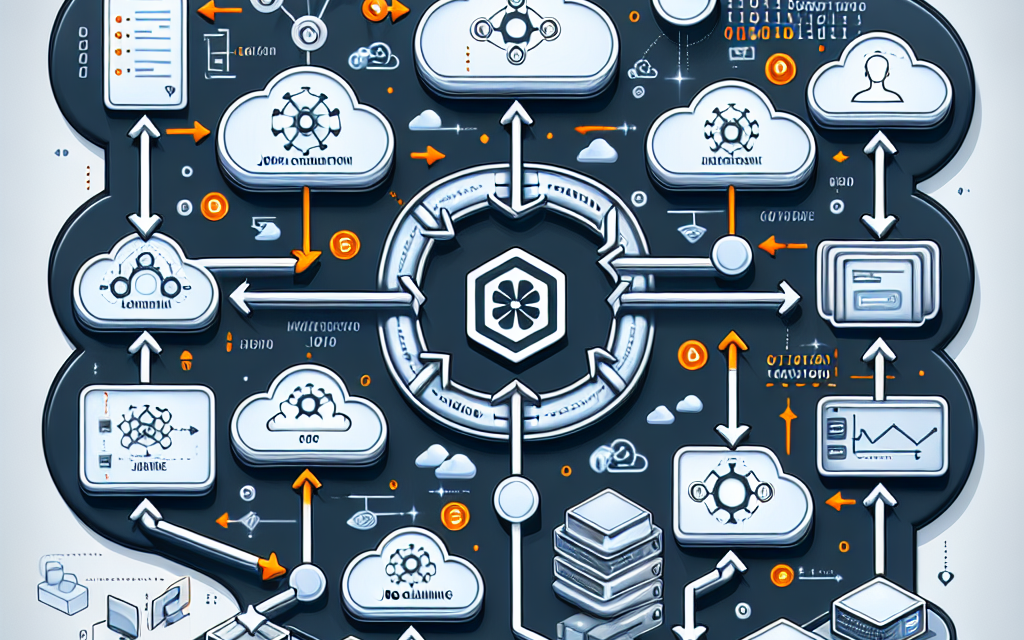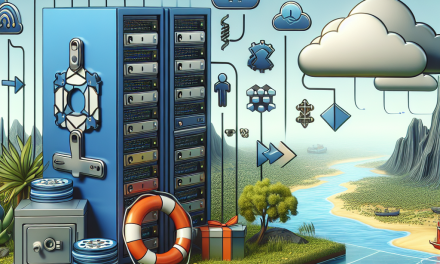In today’s fast-paced digital landscape, businesses are increasingly relying on automation to streamline their workflows and enhance productivity. One of the most powerful tools for achieving such a degree of automation is Kubernetes. This open-source platform not only manages containerized applications but also offers robust capabilities for job automation. In this article, we’ll explore how Kubernetes Job Chaining can optimize workflow automation, dramatically enhancing efficiency and scalability.
Understanding Kubernetes Jobs
Kubernetes Jobs are designed for running batch processes or tasks that need to be completed successfully. They’re particularly useful for scenarios where tasks are not long-lived and can be run independently in the form of containers. The Job API ensures that a specified number of pods successfully finish their execution, making it ideal for a range of use cases, from data processing to system maintenance.
Key Features of Kubernetes Jobs
- Retry Mechanisms: Jobs in Kubernetes automatically handle retries for failed executions, ensuring that critical tasks are not neglected.
- Parallelism: Support for running multiple pods in parallel allows for faster completion of tasks.
- Customizable Schedulers: You can determine when and how jobs are executed, providing a level of control that meets various operational needs.
What is Job Chaining?
Job Chaining involves creating a sequence of jobs where the output of one job becomes the input for the next. This approach allows for complex workflows to be orchestrated with minimal manual intervention, significantly enhancing automation capabilities.
Implementing Job Chaining in Kubernetes
-
Define Individual Jobs: Create episodes (jobs) for each segment of your workflow. Each job can be defined using a YAML file that specifies its parameters, environment variables, and Docker images.
-
Utilize Kubernetes APIs: Use the Kubernetes API to monitor the completion of each job. Once Job A is finished, you can automatically trigger Job B.
-
Handle Dependencies: Use tools like Argo Workflows or Tekton that are designed for managing complex workflows and handling dependencies. These tools provide a way to visualize job chaining and rapidly develop workflows.
-
Containerization: Ensure each job is appropriately containerized. This isolates the job execution environment, allowing for consistency and reliability, regardless of where jobs run.
Example Workflow
Consider a data processing pipeline consisting of three jobs: Data Ingestion, Data Transformation, and Data Analysis.
-
Job 1 – Data Ingestion: A job that fetches data from an external API and stores it in a Kubernetes Secret or a persistent volume.
-
Job 2 – Data Transformation: After Job 1 completes, it triggers Job 2, which transforms the ingested data and prepares it for analysis.
-
Job 3 – Data Analysis: Finally, once Job 2 is completed, Job 3 executes, performing analysis on the transformed data and generating insights.
By chaining these jobs, organizations can automate the entire flow from data ingestion to actionable insights with minimal manual input.
Benefits of Job Chaining in Kubernetes
- Seamless Workflows: Automating the sequence of tasks minimizes human error and enhances efficiency.
- Scalability: Kubernetes’ native handling of resources allows organizations to scale their workflows as demand fluctuates.
- Resource Optimization: Only the necessary containers and resources are used, reducing costs associated with idle resources.
- Error Handling: Improved monitoring and error handling lead to more resilient workflows, which can self-correct if anomalies occur.
Conclusion
Kubernetes Job Chaining serves as a robust solution for optimizing workflow automation, allowing organizations to create seamless, scalable, and efficient processes. By leveraging the powerful features of Kubernetes for job management, businesses can shift their focus from manual task management to strategic initiatives that drive growth and innovation. Whether you’re running batch jobs for data processing, handling periodic maintenance tasks, or orchestrating complex application deployments, Kubernetes Job Chaining can unlock a new level of productivity for your operations.
Embrace the power of Kubernetes today and transform your workflow automation strategies for a more agile and resilient future!
For more insights on Kubernetes and workflow automation, stay tuned to the WafaTech Blog. Let’s optimize your processes together!





